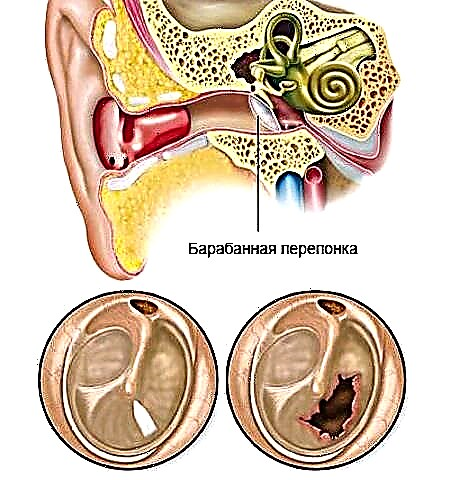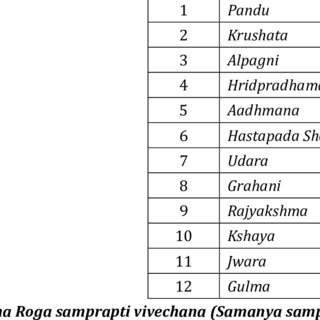The authoritative pediatrician Dr. Komarovsky has talked more than once about the treatment of rhinitis in children of different ages. The specialist believes that exposure to medication is permissible only in extreme cases, and should be avoided if possible. Consider why children often get sick, how to get rid of this problem and prevent its occurrence.
Why does a runny nose appear
 To understand how to treat snot, you need to understand why they appeared. In infants and older children, mucus can only be secreted because the house is too hot and dry. So the body softens the nasal mucosa. Also, a runny nose can be a consequence of viral and infectious diseases. The secretions contain substances that prevent the spread of pathogens to the lungs, pharynx and respiratory tract.
To understand how to treat snot, you need to understand why they appeared. In infants and older children, mucus can only be secreted because the house is too hot and dry. So the body softens the nasal mucosa. Also, a runny nose can be a consequence of viral and infectious diseases. The secretions contain substances that prevent the spread of pathogens to the lungs, pharynx and respiratory tract.
Children often get colds. In Europe, it is considered normal if a baby catches a cold 6-10 times a year. But in Russia, such a child is immediately registered and treated with potent drugs. However, this method only kills the immune system and develops a persistent addiction to medicines, and this is harmful to a young organism. Before you start treating snot, you need to understand why they appeared.
Such factors can provoke them:
- insufficient humidity in the room;
- too warm air;
- allergy;
- viral and bacterial infections;
- anatomical features (polyps, curvature of the nasal septum, etc.).
Why you can't use medications right away
The famous doctor is against drug therapy, as he considers it ineffective and even dangerous for the health of children. If a large amount of mucus accumulates on the back of the nose, it means that the body is fighting infection or allergens, and this is good for health.
Transparent snot of a liquid consistency should not be "dried" in any case. Vasoconstrictor agents are used only in cases of allergic reactions and very carefully.
 Antibiotics are generally contraindicated, especially if the disease is found in a baby. Potent substances must accumulate in the focus of infection in sufficient quantities so that pathogenic microorganisms do not develop immunity to it. It is physically impossible to “collect” the required dose of the drug in the nose, and a small amount of it will only lead to the ineffectiveness of the drug during further treatment.
Antibiotics are generally contraindicated, especially if the disease is found in a baby. Potent substances must accumulate in the focus of infection in sufficient quantities so that pathogenic microorganisms do not develop immunity to it. It is physically impossible to “collect” the required dose of the drug in the nose, and a small amount of it will only lead to the ineffectiveness of the drug during further treatment.
Parents who receive from a pediatrician only a list of actions to eliminate a cold in an infant or an adult child and not a single prescribed drug are, to put it mildly, bewildered.
The fact is that there is simply no cure for the common cold. To get rid of the problem, you need to eliminate its cause. Therefore, competent experts do not recommend using fashionable sprays and drops, but advise more effective methods.
What to do with a cold
 It is necessary to treat snot in a child only after consulting a doctor. When a specialist identifies the problem, he will prescribe the most effective measures to eliminate it. Before starting therapy, you need to understand that viral and bacterial rhinitis is eliminated quickly only if the baby breathes "healthy" air. Follow these simple rules so that the body can independently cope with the infection in a short time:
It is necessary to treat snot in a child only after consulting a doctor. When a specialist identifies the problem, he will prescribe the most effective measures to eliminate it. Before starting therapy, you need to understand that viral and bacterial rhinitis is eliminated quickly only if the baby breathes "healthy" air. Follow these simple rules so that the body can independently cope with the infection in a short time:
- Humidify the air. Overdried air should be identified with overdried mucous membranes. Snot in such a microclimate dries up and can no longer perform its protective functions, but only complicate breathing. A household humidifier can help set things up. The optimum humidity in the room is 70%, you can check it with a hygrometer. If there is no way to buy a humidifier itself, wash the floor as often as possible, hang wet towels in the room, spray water with a spray bottle.
Interesting to know! Opening the vent will prevent you from humidifying the air. Any change in room temperature - cooling or heating - causes a decrease in humidity. Use a household humidifier to create a comfortable microclimate.
 Regulate heating. Too hot air, contrary to the notions of our grandmothers, not only does not contribute to the treatment, but also significantly complicates it. It is advisable that the air temperature in the room does not exceed 20 ᵒС, this way it is possible to prevent overdrying of the nasal mucosa. If it is not possible to autonomously adjust the battery mode, cover them with a thick cloth or blanket, so they will give less heat.
Regulate heating. Too hot air, contrary to the notions of our grandmothers, not only does not contribute to the treatment, but also significantly complicates it. It is advisable that the air temperature in the room does not exceed 20 ᵒС, this way it is possible to prevent overdrying of the nasal mucosa. If it is not possible to autonomously adjust the battery mode, cover them with a thick cloth or blanket, so they will give less heat.- Moisturize the nasal mucosa constantly. If a baby is worried about a runny nose, saline will help. This is purified water to which a little salt is added. The mixture does not cause side effects. You need to drip 3-4 drops into each nostril with an interval of 30 minutes. You can also substitute olive oil or petroleum jelly.
- Let's drink a lot. Viral and bacterial infections are usually accompanied by an increase in body temperature. This process causes the blood and mucus to thicken. To prevent this, you need to give the child a lot of liquid, so you will not avoid overdrying the mucous membrane.
Common mistakes
In addition to the fact that snot on the back of the nose is not desirable to be treated with vasoconstrictors and antibiotics, there are a number of prohibited methods.
What can not be done categorically if the child or baby has liquid or thick accumulations of mucus in the nose:
 Give children raspberry tea. Raspberries are a diaphoretic, if a child sweats, his body temperature drops, he becomes cold, and this leads to dehydration. An old-fashioned drink is fine, but a cup of raspberry tea should be one-third after two cups of water.
Give children raspberry tea. Raspberries are a diaphoretic, if a child sweats, his body temperature drops, he becomes cold, and this leads to dehydration. An old-fashioned drink is fine, but a cup of raspberry tea should be one-third after two cups of water.- Treatment by steaming the limbs. Even the thickest green snot you cannot cure with this procedure. The procedure will again lead to the loss of valuable moisture in the body.
- Overheat the room. Dry air and heat can cause complications such as bronchitis or even pneumonia. If liquid discharge in the nose begins to dry out, it can no longer protect the body of an infant or an older toddler from the spread of bacteria and viruses into the respiratory tract. It is best to dress children warmly, but do not allow the room temperature to rise too high.
- Clean out the snot with a cotton swab. It is especially difficult to remove mucus if it accumulates in the baby. For older children, everything happens relatively simply and quickly, they can blow their nose on their own. However, it is impossible to clean the nose with cotton swabs; this method cannot remove the compartments on the back wall. But you can easily injure the mucous membrane. Instead of this method, use oil solutions of vitamins A and E, gently lubricate the inside of your nose with them every 2 hours.
Runny nose prevention
 Snot in children may appear due to hypothermia only in some cases. Most often these are bacterial or viral infections, less often - an allergic reaction of the body. It is quite difficult to treat thick accumulations of mucus on the back wall, since it is necessary to eliminate the cause of the disorder in an infant or an older toddler. It is best to prevent infections, for this you need to follow these rules:
Snot in children may appear due to hypothermia only in some cases. Most often these are bacterial or viral infections, less often - an allergic reaction of the body. It is quite difficult to treat thick accumulations of mucus on the back wall, since it is necessary to eliminate the cause of the disorder in an infant or an older toddler. It is best to prevent infections, for this you need to follow these rules:
- regularly ventilate the room;
- create a microclimate in the room that is comfortable for breathing (humidity, air temperature);
- dress the baby for the weather;
- often walk in the fresh air;
- do not use antibiotics and vasoconstrictors unless absolutely necessary;
- strengthen immunity.
Let's summarize
 Treatment of the common cold according to Komarovsky is the creation of ideal conditions for the body to fight the disease itself. Thick or thin, clear or green, all mucus is a defense mechanism. You need to treat not a runny nose, but the ailment that provoked it. To figure out why a secret accumulates on the back of the nose, you need to contact an experienced specialist.
Treatment of the common cold according to Komarovsky is the creation of ideal conditions for the body to fight the disease itself. Thick or thin, clear or green, all mucus is a defense mechanism. You need to treat not a runny nose, but the ailment that provoked it. To figure out why a secret accumulates on the back of the nose, you need to contact an experienced specialist.
It is highly undesirable to use medication to treat clear or thick nasal discharge. There is only one case when mucus accumulations on the back wall can be eliminated with drops and sprays - allergies. In all other situations, creating favorable conditions in the house and timely moisturizing the back of the nose will help the body to fight the infection on its own.

 Regulate heating. Too hot air, contrary to the notions of our grandmothers, not only does not contribute to the treatment, but also significantly complicates it. It is advisable that the air temperature in the room does not exceed 20 ᵒС, this way it is possible to prevent overdrying of the nasal mucosa. If it is not possible to autonomously adjust the battery mode, cover them with a thick cloth or blanket, so they will give less heat.
Regulate heating. Too hot air, contrary to the notions of our grandmothers, not only does not contribute to the treatment, but also significantly complicates it. It is advisable that the air temperature in the room does not exceed 20 ᵒС, this way it is possible to prevent overdrying of the nasal mucosa. If it is not possible to autonomously adjust the battery mode, cover them with a thick cloth or blanket, so they will give less heat. Give children raspberry tea. Raspberries are a diaphoretic, if a child sweats, his body temperature drops, he becomes cold, and this leads to dehydration. An old-fashioned drink is fine, but a cup of raspberry tea should be one-third after two cups of water.
Give children raspberry tea. Raspberries are a diaphoretic, if a child sweats, his body temperature drops, he becomes cold, and this leads to dehydration. An old-fashioned drink is fine, but a cup of raspberry tea should be one-third after two cups of water.

